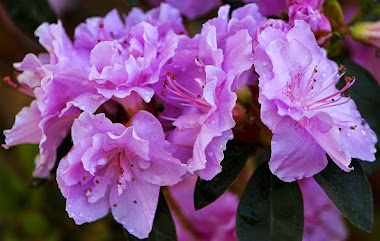WELCOME TO
THIS POST!
SOME LOVELY FLOWER FOR MY READERS.
In Memory
of Violeta Parra, an extraordinary Chilean artist.
Click to enlarge
Source: Pixabay, Public Domain
Chileans
are well known for their creativity. They are prolific at creating poetry and
music that becomes popular, as well as developing the visual arts.
Among all
these artists, the Parra Family is justly famous. This large family has
provided the arts with some internationally famous names, such as Nicanor Parra,
known as the “anti-poet” and Violeta Parra, the musician and artist extraordinaire.
Violeta
composed the well known song Gracias a la
Vida, with its beautiful lyrics and a rather plaintive melody.
It has been
recorded by other well known figures, such as Joan Baez and Mercedes Sosa and
in general is popular throughout Latin America.
The lyrics
are ambiguous. They can be interpreted as a romantic tribute to life in
general. However, many think Violeta intended it as a sort of suicide note.
She
shot herself soon after she finished composing it. She died in 1967.
MY FREE
TRANSLATION OF THE LYRICS.
THANK YOU, LIFE - by VIOLETA PARRA
Thank you,
Life, for giving me so much
You gave me
two eyes and when I open them
I can
distinguish between black and white
And the
starry background of the sky above
And in the
multitudes, the man I love.
Thank you,
Life, for giving me so much
You gave me
my hearing with all its power
To record,
night and day, crickets and canaries
Hammers,
turbines, barks, rain showers
And the
tender voice of my beloved.
Thank you,
Life, for giving me so much
You gave me
sounds and the alphabet
And with it
the words that I think and declaim
Mother,
friend, brother and light illuminating
The route
of the soul of the person I love.
Thank you,
Life, for giving me so much
You gave me
the steps of my tired feet
With them I
walked through cities and puddles,
Beaches and
deserts, mountains and plains
And your
house, your street and your yard.
Thank you,
Life, for giving me so much
You gave me
my heart that pounds in its frame
When I see
the fruits of the human brain,
When I see
the good so distant from the wicked,
When I look
into the depths of your bright eyes.
Thank you,
Life, for giving me so much
You gave me
laughter and you gave weeping,
So I can
distinguish happiness from grief
The two
substances that give shape to my song
And your
song which is also the same song
And everyone’s
song that is also my own song
Thank you,
Life, for giving me so much.
THE ORIGINAL VERSION OF THIS SONG INTERPRETED BY VIOLETA PARRA
FINAL
THOUGHTS
I hope you
have enjoyed this post. The content was chosen with admiration and love for an
extraordinary artist who still provides us with the pleasure of enjoying her
creative work and great sensitivity.
VIOLETA!
Click to enlarge
Source: Pixabay, Public Domain
SPANISH
VERSION
(This Blog
is Bilingual)
GRACIAS A LA VIDA – de VIOLETA PARRA, CHILE
Gracias
a la vida que me ha dado tanto
Me dio dos luceros que cuando los abro
Perfecto distingo lo negro del blanco
Y en el alto cielo su fondo estrellado
Y en las multitudes el hombre que yo amo.
Gracias a la vida, que me hadado tanto
Me ha dado el oído que en todo su ancho
Graba noche y día grillos y canarios,
Martillos, turbinas, ladridos, chubascos,
Y la voz tan tierna de mi bien amado.
Gracias a la vida que me hadado tanto
Me hadado el sonido y el abecedario
Con él las palabras que pienso y declaro
Madre amigo hermano y luz alumbrando,
La ruta del alma del que estoy amando.
Gracias a la vida que me ha dado tanto
Me ha dado la marcha de mis pies cansados
Con ellos anduve ciudades y charcos,
Playas y desiertos montañas y llanos
Y la casa tuya, tu calle y tu patio.
Gracias la a vida que me ha dado tanto
Me dio el corazón que agita su marco
Cuando miro el fruto del cerebro humano,
Cuando miro el bueno tan lejos del malo,
Cuando miro el fondo de tus ojos claros.
Gracias a la vida que me ha dado tanto
Me hadado la risa y me ha dado el llanto,
Así yo distingo dicha de quebranto
Los dos materiales que forman mi canto
Y el canto de ustedes que es el mismo canto
Y el canto de todos que es mi propio canto.
Gracias a la vida que me ha dado tanto.
PALABRAS FINALES
Espero les haya gustado este post. El tema fue escogido con
sentimientos de admiración y amor por una artista extraordinaria que en el
presente nos sigue regalando la felicidad de poder disfrutar de su creación
artística y gran emotividad.
More
about similar topics in a future post. Más sobre temas similares en un
próximo post.
How is your level of comprehension? ¿Cómo
está su nivel de comprensión?
© 2013 jveronr (Joan Robertson)
I will be very happy to receive your comments! Just
click the word “comments” lower down.


.1+pink+rose.+Pixabay,+Public+Domain.jpg)


